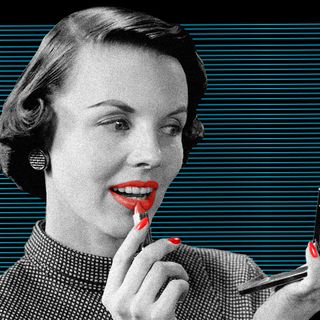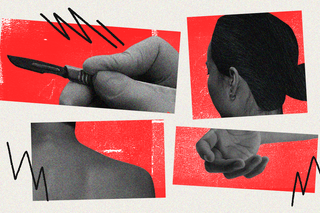
How a Lack of Skin Donor Banks in Gujarat Is Creating an Alarming Crisis for Burn Victims
The dearth of skin banks means that survivors of dowry violence, gas explosions, industrial accidents, and acid attacks don’t have any recourse.

The lockdown of May 2020 was particularly arduous for Jamalpur resident Faisal Kharawala. At the peak of strict curfew guidelines across India, particularly in Maharashtra and Gujarat, the 31-year-old drove 1,147 km from Ahmedabad to Belgaum in Karnataka to get a cadaver skin for his wife, Misba Kharawala, who had suffered over 71% deep burns at home while cooking.
“My entire team was on standby, aiding Faisal in transporting the cadaver skin from Belgaum to SVP Hospital in Ahmedabad,” said Dr. Vijay Bhatia, a renowned plastic surgeon with 30 years of practice at Ahmedabad’s Sterling Hospital.
“The skin requires certain temperature control, and if the box in which it is stored is opened for any reason midway, the entire effort goes waste. We were worried as there was strict checking and the patient’s husband had to cross three state borders. Had even one check-point opened the box, the skin would have gone to waste.” The surgery eventually took 36 hours.
While movies like Chhapaak (2020) attempt to show the complicated path to legal justice for skin burn victims of acid attacks, there is little representation of how difficult it can be for victims and their families to simply receive adequate and timely health care.
“India witnesses an average of around 17 lakh [fire-related] accidents in a year and most patients require skin grafting,” points out Dr. Deepak Narola, Chairperson of the Indian Red Cross Society. Despite this, India has only two government-backed skin banks – one in Sion Hospital in Mumbai and the other at Bangalore Medical Hospital.
Although skin transplant is an arduous task across India, the situation in Gujarat is of great concern, as the state lacks skin reserves despite being called a “model state” for medical needs. According to Dr. Bhatia, this is primarily because there wasn’t a single skin bank in the state until five months back.
Skin banks are places where harvested skin grafts from donors are stored for future use. “The skin bank is a valuable resource in providing cadaveric allograft skin as a cover for partial-thickness and full-thickness burn injuries,” explains a 2018 research paper.
Related on The Swaddle:
Acid Attack Survivors Are Entitled to Rehab and Medical Aid, Not Just Compensation: Bombay HC
Besides burn accidents, skin grafting is also required in victims of dowry burns, riots, acid attacks, and industrial burns. “Maximum cases are of industrial burns and they are usually third-degree in nature,” explains Dr. Bhatia.
“We don’t have enough infrastructure in Gujarat to establish skin banks. Awareness also plays an important part in ensuring that people donate [skin]. We are lacking on that part as well.”
On average, Dr. Bhatia treats around 350 burn cases a year. A boiler blast in Baroda in December and acid attacks on women in Amreli and Ahmedabad are just recent examples.
The shortage of skin in Gujarat’s only bank and an overall lack of such banks in the state has meant that, in cases of emergency, few victims are able to receive the medical care needed for procedures like skin grafting.
Dr. Bhatia says that they primarily rely on Mumbai’s skin banks, forcing people like Faisal to sometimes travel personally to access the required material. “Mumbai has the infrastructure whereas Gujarat, despite getting so many patients, is yet to get its act straight.”
Gujarat’s first certified skin bank opened in Rajkot this year, funded by the Indian Red Cross Society. Dr. Narola reports that the bank has received only one donation since its establishment.
Establishing a skin bank requires quality infrastructure, especially in terms of storage. A reserve’s capacity to protect donated skin is essential for ensuring the availability of skin.
“Skin taken from a dead person’s body is treated with chemicals first so as to increase its shelf life, following which it has to be stored under -71 to -83° Celsius,” says Dr. Bhatia.
Related on The Swaddle:
‘Chhapaak’ Avoids Trauma Porn, Focuses on Legal Nightmare for Survivors
During the Vibrant Gujarat event in 2011, the Gujarat government signed a memorandum of understanding (MoU) with Euro Skin Bank, one of the largest skin banks in the Netherlands, for setting up a skin bank at Ahmedabad Civil Hospital Campus. 11 years later, the MoU is yet to materialize.
“The G-2 ward of the hospital where the skin bank was supposed to be set up was demolished,” said Dr. MF Shaikh, the then-head of the burns and plastic surgery department at Civil Hospital.
Across India, there are only a handful of other skin banks in a couple of other states. For a population of over 1.38 billion, a total of 17 skin banks (government and otherwise) just don’t cut it.
To worsen the situation, owing to the lack of skin donations to these existing centers, “the morbidity rate increases and so does the recovery time,” points out Dr. Narola.
“In Mumbai, on average, we receive 20 donations a month. Our calculation, however, reveals that we require 150 donations to somewhat match the demand,” says Dr. Sunil Keswani, plastic surgeon and head of National Burns Centre, Airoli. “The government has done extremely minimal to ensure the functioning of skin banks in India.”
Skin-related injuries are often represented in Indian popular culture primarily for their spectacular nature but questions about their treatment are rarely probed. The provision of free and secure gas cylinders and strictly enforced industrial safety regulations, among other steps, would mitigate the potential dangers leading to skin burns. However, the government needs to massively step up in playing its role in the provision of quality treatment to victims without them having to travel upwards of 1,000 kilometers or shelling out the entirety of their savings. In a situation where immediate surgeries have the potential to save lives, why is there still no active participation by the state to rectify the acute paucity of publicly supported mechanisms for skin storage and usage, especially in Gujarat?
Misba Kharawala’s treatment may have been successful, but why did Faisal Kharawala have to cross three state borders to access a life-saving organ?
Ashvita Singh is an independent journalist based in Ahmedabad reporting on health and human rights. She can be reached on Twitter at @ashvita_singh.
Related


How Comforting a Friend Can Help Reduce Our Own Distress
